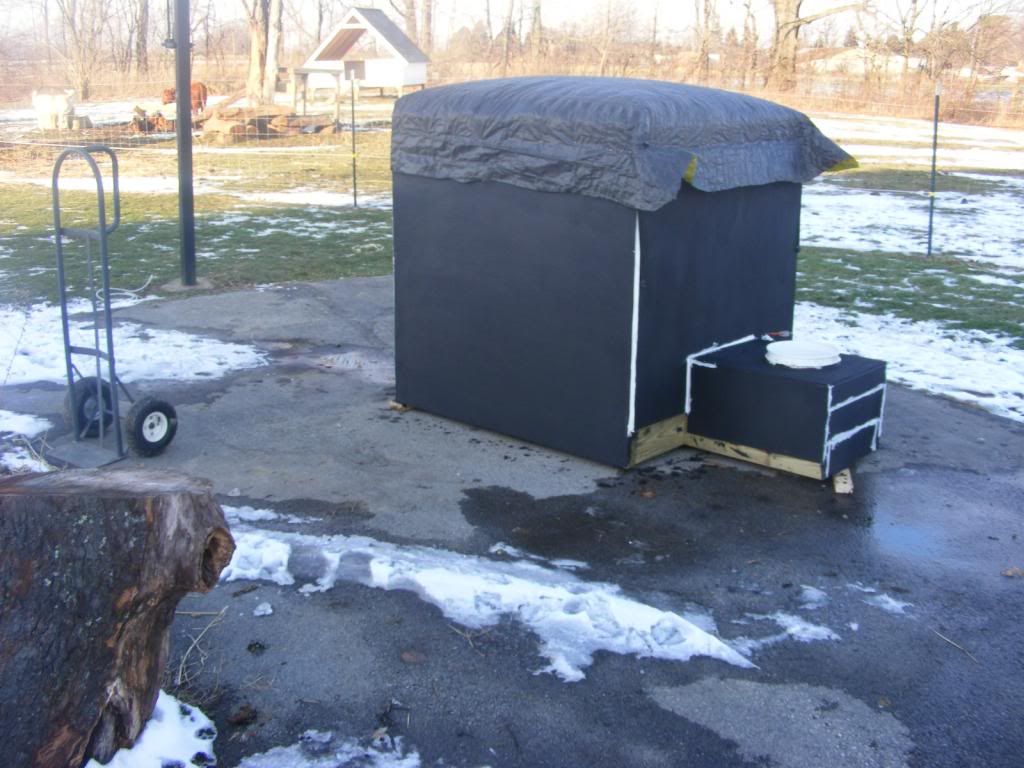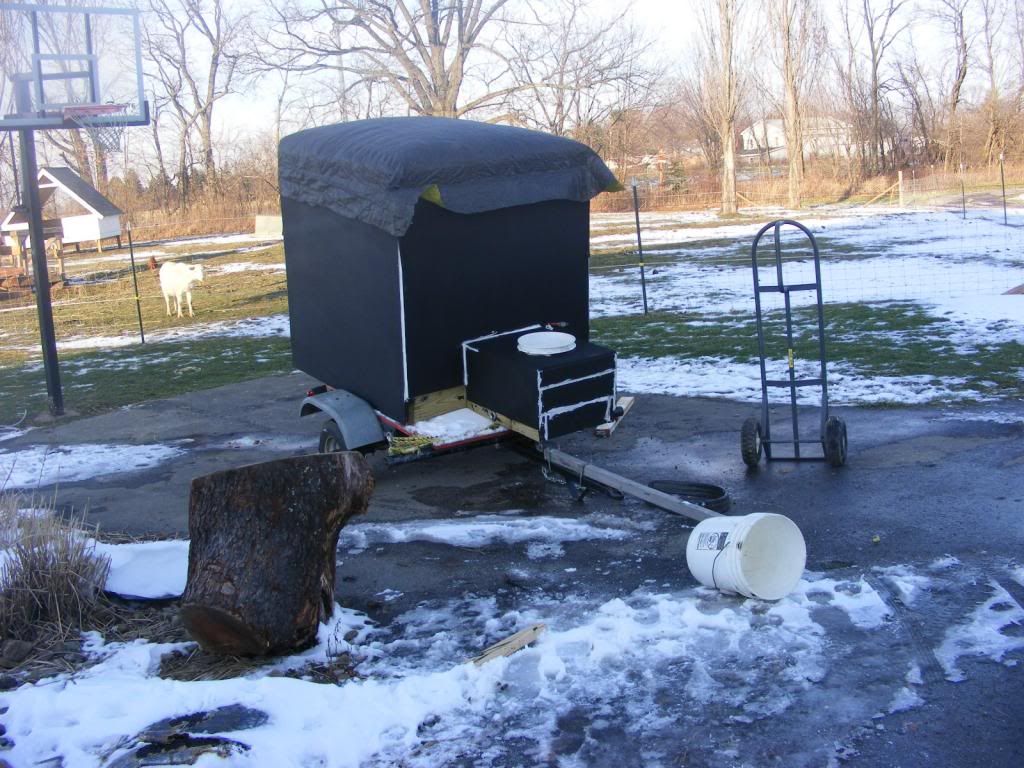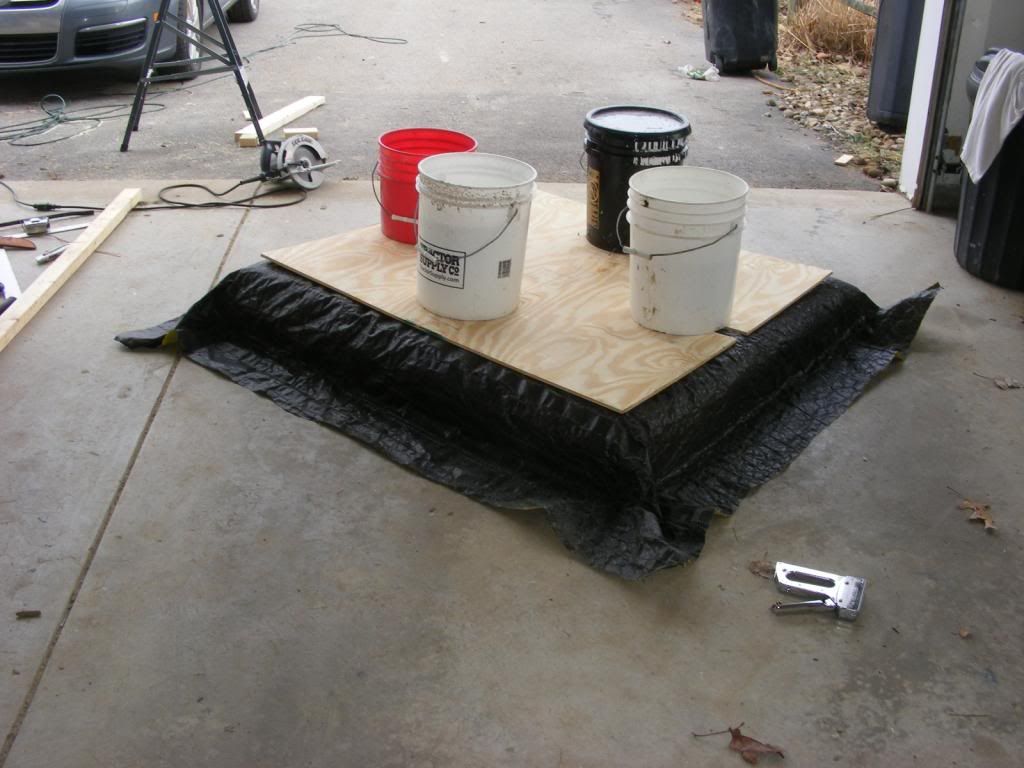Forum Replies Created
- AuthorPosts
Andy Carson
ModeratorThat’s a pretty slick tool, Jonathan, thanks for sharing!
Andy Carson
ModeratorAny other ideas or techniques for teaching large cattle to lead better? Some of us have neither tractors nor donkeys… 🙂
Andy Carson
Moderatorheres a link to a YouTube video of a donkey “teaching” a calf to lead. I would hate to see what a full grown bull would do to that donkey if it was tied to it. Poor donkey!
http://www.youtube.com/watch?v=3k5qwdK6K6gAndy Carson
Moderatorjust out of curiosity, Kevin, is there anything you plan to do differently with your cattle (or at least try) based on the lessons from this video? If so, what?
December 26, 2012 at 12:47 am in reply to: A different kind of insulated water tank: 275 gallons, 42 watts #76404Andy Carson
Moderatoryou bring up a good idea about the solar energy, Charlie. 42 watts really isn’t much and that amount of power isn’t hard to capture during daylight hours. A good solar system would also make it totally portable. I’ll have to give this a think… from what ive seen so far, the 42 watts is more than it needs too. The heater element isn’t always on. That said, its not January yet, and it will get colder…
December 24, 2012 at 3:12 pm in reply to: A different kind of insulated water tank: 275 gallons, 42 watts #76403Andy Carson
ModeratorYou aren’t kidding, Eli. At my current electric prices, it costs about $100 a month to run a 1500 watt stock tank heater. Running a 42 watt heater costs $3 a month. The construction cost pays for itself in a very short time.
December 24, 2012 at 2:30 am in reply to: A different kind of insulated water tank: 275 gallons, 42 watts #76402Andy Carson
ModeratorIn case anyone is saying “Yeah, but it’s still heated,” let me point out a conventional stock tank heater is about 1500 watts. If it’s heating a 110 gallon tank, you are using over 35 times the power to keep less than half this volume of water from freezing. Some heated dog bowls run at 50 watts, but only keep a gallon or so from freezing. The massive amount of insulation, sealing of cracks, two chamber design, and limited open water make this design very different.
December 24, 2012 at 2:21 am in reply to: A different kind of insulated water tank: 275 gallons, 42 watts #76401Andy Carson
ModeratorNext I built box to encase basin, insulated with 2 inches of foam, wrapped 6 foot (42 watt) pipe heater cable around pumping and basin and moved outside to paint and calk cracks
Here”s the painted and calked waterer (does this remind anyone else of a toilet?)

A close up of the watering hole -It’s a 5 gallon bucket with the bottom cut off. It’s placed in the metal basin so water can come in from below (where ice can’t build up). A 5 gallon bucket is big enough for all my animals to drink from, but small enough to clean easily and dirt can’t hide from a quick inspection. It seems also ideal, but it still looks like a toilet!
[IMG]http://i1264.photobucket.com/albums/jj493/countymouse/waterer/DSCF3430_zps0268695c.jpg?t=1356312173[/IMG]Loaded onto my handy-dandy handcart for transport into the field. I love this thing!
 December 24, 2012 at 2:06 am in reply to: A different kind of insulated water tank: 275 gallons, 42 watts #76400
December 24, 2012 at 2:06 am in reply to: A different kind of insulated water tank: 275 gallons, 42 watts #76400Andy Carson
ModeratorTop cover construction (like upholstry with insulation and a tarp)
Two layers of insulation (heat rises)

Plywood and buckets to weight down top and staple around edge

Nice puffy pillow top

Placed on frame (hinged in rear, bungeed in front)
[IMG]http://i1264.photobucket.com/albums/jj493/countymouse/waterer/DSCF3428_zpsbbb357b8.jpg?t=1356314742[/IMG]Andy Carson
ModeratorWelcome Saxon,
We are probably not far apart, I live east of new castle, about half way to 79. Where exactly are you in western pa are you?December 21, 2012 at 3:16 pm in reply to: Most users ever online was 425, Yesterday at 09:30 PM. #76318Andy Carson
ModeratorSure Mike,
July had 5892 unique visits. From a seasonal point of view, it looks like activity is lowest in early fall and, moderate thoughout the summer, and fluctates wildly in the winter.Andy Carson
Moderator@Donn Hewes 38389 wrote:
Hi Andy, I truly believe these weights change when the machine is pulled.
Perhaps they do, I can see how they could. You could replicate this easily enough. Block the wheels, and apply a forward force to the double tree (or equivalent) that represents the draft force from your horses and/or mules. I would do this with a rope, a pulley, and some known weights. Tim’s collected some data on this on here somewhere on this site. This would represent the effect of the applied draft force when in motion. Probably more accurate with 200 lb (or equivalent) in the seat too. There are always others effects when you are in the field, but i think this captures the effect of the main players.
PS. Here’s a link to the thread discussion mower draft. 462 lbs would be a good estimate of the draft for a 7 foot mower. I don’t don’t have 462 calibrated pounds laying around the house, so I would probably end up putting a pulley on the mower attachment point (doubling the applied force) and hanging 230 lbs. I have free weights laying around that do this. Water containers work too, as do weighed bags of animal feed. Anything else that take be tied to a rope works as well, as long as it’s “people sized” you can just weigh it on the bathroom scale.
shttp://www.draftanimalpower.com/showthread.php?3103-Sicklebar-mower-draft&highlight=draft+force+mower
Andy Carson
Moderator@Donn Hewes 38379 wrote:
I never really attributed the slipping to the dolly wheel, but it is an interesting thought. I have been planning to change these wheels, or better yet learn how to recondition the lugs. That is something I have been working on this winter, and explains this long and detailed post. If I understand you correctly I could put the end of a tongue on a regular mower up in the air and use a jack to lift an axle; and it should take more effort than if the mower had a dolly wheel. Interesting.
Yes, Donn, using the dolly wheel will remove some weight from the drive wheels. It sounds like slipping can be a problem, so this reduction in downward force (and reduction in traction) could be a problem. Strong emphasis on the “some” and the “could.” You could jack up the rear with the dolly wheel vs support from the tongue, but you will likely be comparing “heavy” to “heavy.” You will probably need a scale and I’m not sure you have one that would work for this application. Let me suggest a different methology. Weigh the downward force and the end of the tongue and under the dolly wheel. You could probably do this with a bathroom scale and a stool (to sit the tongue on). If you are using a western style harness, you would measure at the end of the tongue. If you are using a d-ring, you would move back from the end of the tongue a distance that is equal to your side straps and weight the downward force at this point. Next, slip the scale under the dolly wheel. Any weight supported by the horses or the dolly wheel is not applied to the drive wheels. If you do this, please share. I am curious.
Andy Carson
Moderator@Oxhill 38381 wrote:
If you do put rings in, and take them anyplace, don’t underestimate the public!
Eek!!! Good point.
Andy Carson
ModeratorNose rings were discussed in the following post, I was just pointing out how common it is internationally. Not trying to derail the thread.
- AuthorPosts